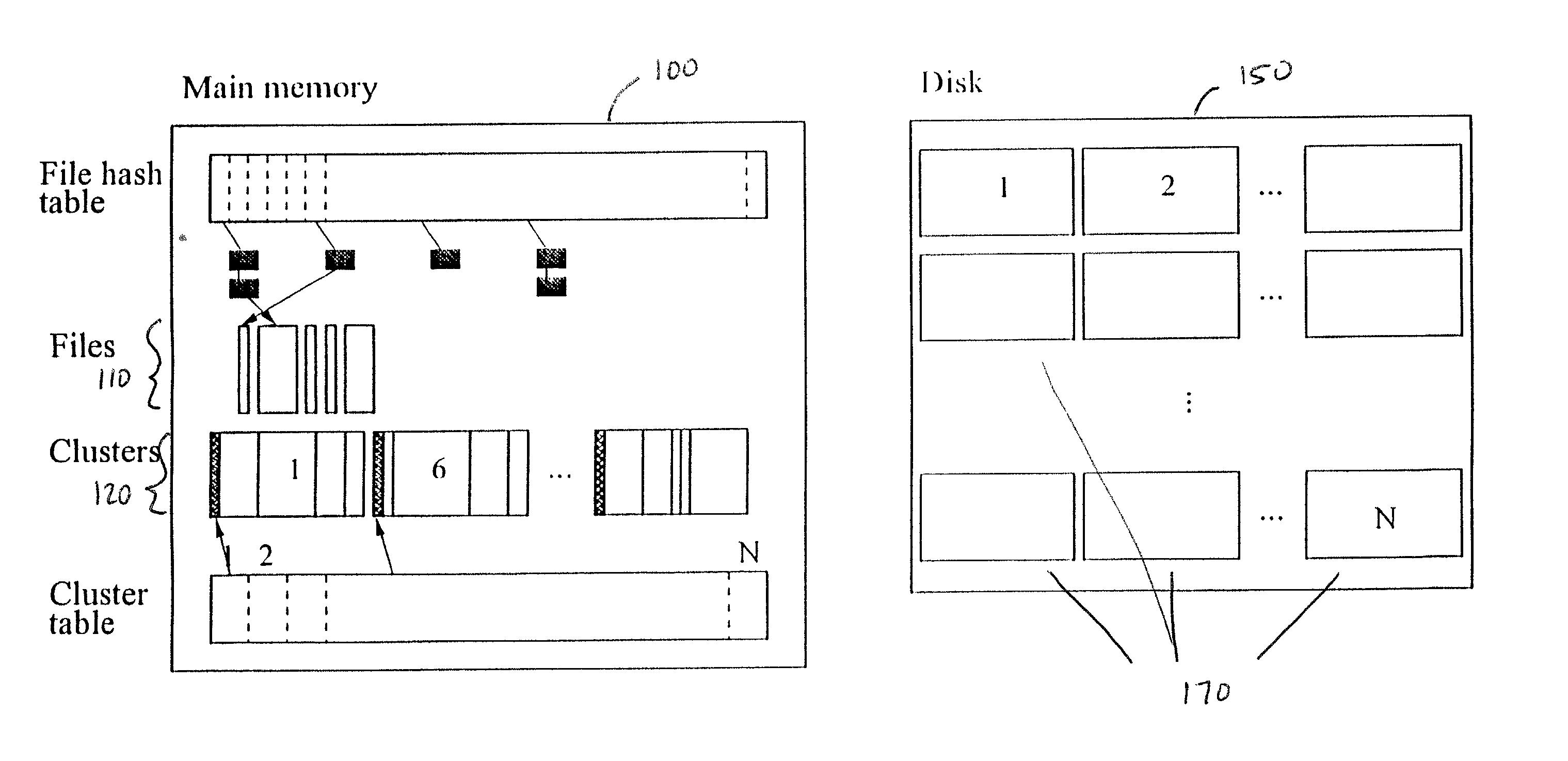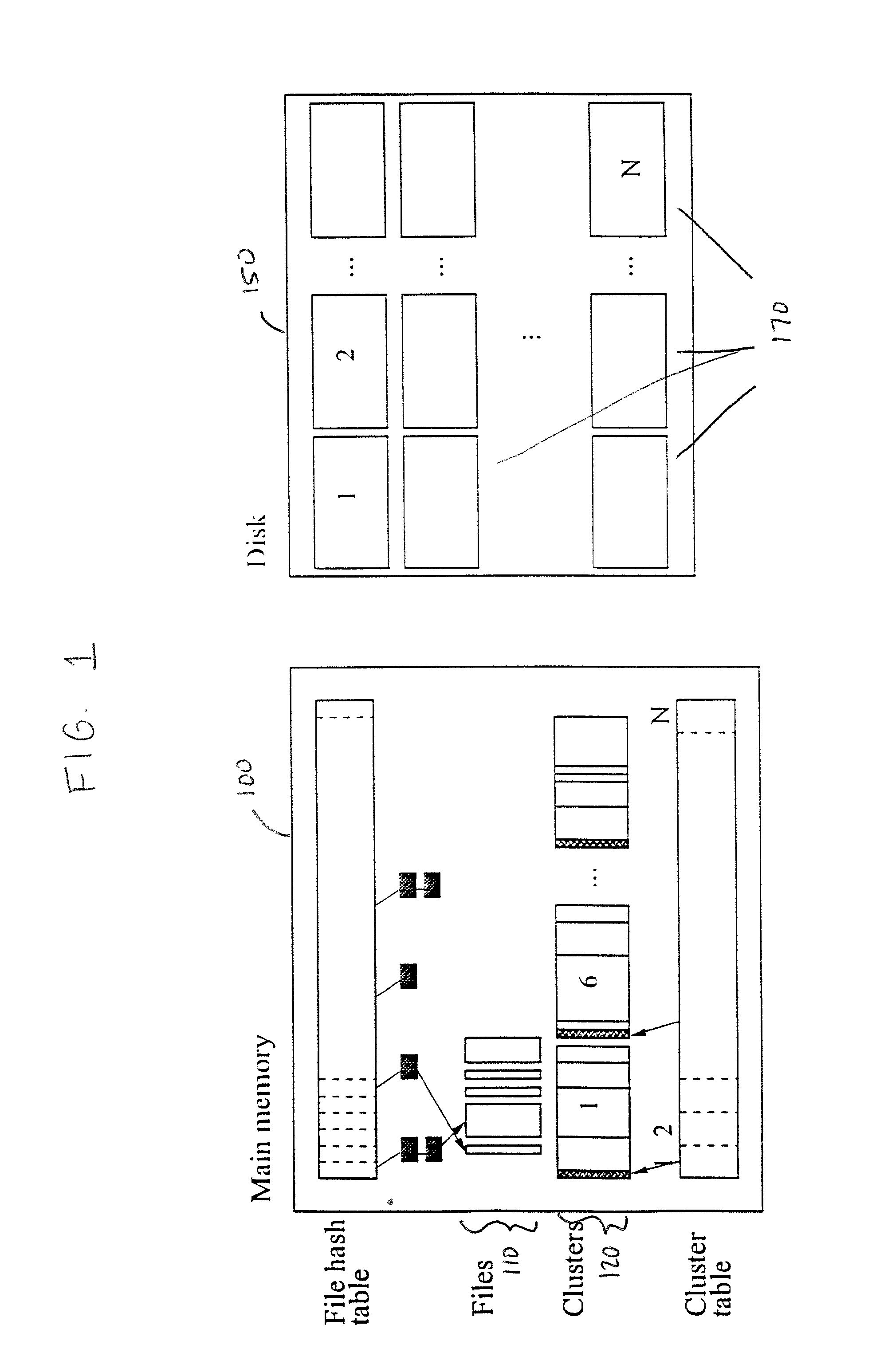File system for caching web proxies
a file system and web proxy technology, applied in the field of file system for caching web proxy, can solve the problems of reducing the hit rate, reducing reducing the reach rate, so as to improve the performance of web proxy, eliminate latency degradation, and be easily portable to different operating systems
- Summary
- Abstract
- Description
- Claims
- Application Information
AI Technical Summary
Benefits of technology
Problems solved by technology
Method used
Image
Examples
Embodiment Construction
[0017]Although applicable generally to any application for which data latency may be improved through the use of a cache, the present invention is useful in the web context, and lends itself to ready explanation in that context.
[0018]In a preferred embodiment of the invention, the file system is implemented by a lightweight library that accesses a raw disk partition. Two types of objects can be stored in main memory: files and clusters. This is illustrated in FIG. 1. In FIG. 1, main memory 100 and disk memory 150 are both shown, as are files 110 and clusters 120. Clusters may either be one size, or may vary in size. In a preferred embodiment, cluster size will be selected from a small subset of possible cluster sizes. In a preferred embodiment, some of these cluster sizes are selected using historical data about the locality sets stored in the clusters. In another embodiment, cluster sizes are based upon successive powers of two, which allows for implementation of the buddy algorith...
PUM
 Login to View More
Login to View More Abstract
Description
Claims
Application Information
 Login to View More
Login to View More - R&D
- Intellectual Property
- Life Sciences
- Materials
- Tech Scout
- Unparalleled Data Quality
- Higher Quality Content
- 60% Fewer Hallucinations
Browse by: Latest US Patents, China's latest patents, Technical Efficacy Thesaurus, Application Domain, Technology Topic, Popular Technical Reports.
© 2025 PatSnap. All rights reserved.Legal|Privacy policy|Modern Slavery Act Transparency Statement|Sitemap|About US| Contact US: help@patsnap.com


